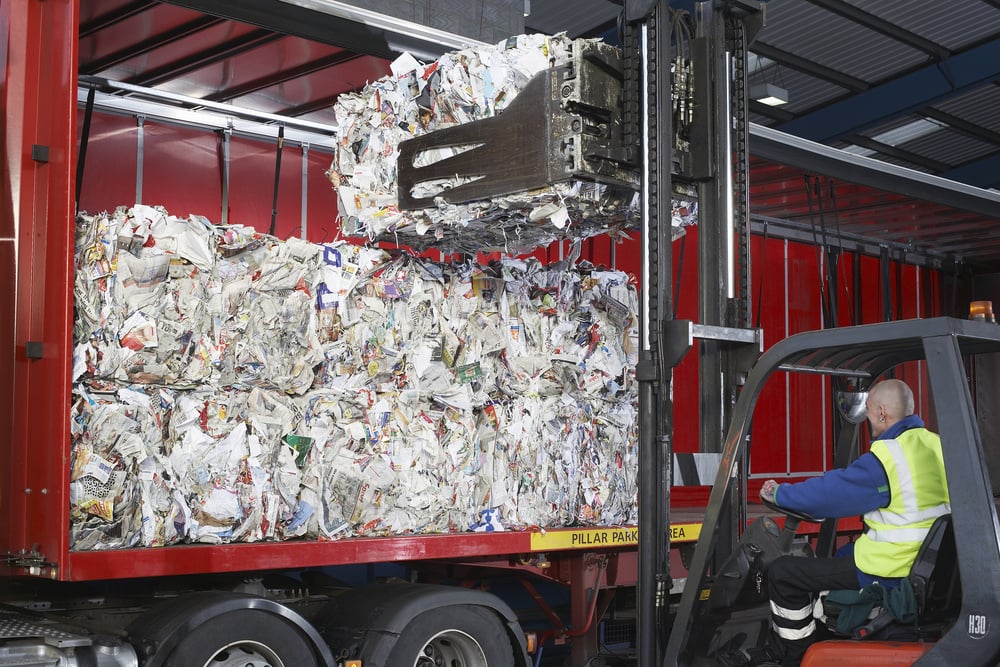Managing manufacturing waste might not always be your top focus, but neglecting it can result in significant costs for your business. Think about the build-up of solid, liquid, hazardous, or non-hazardous waste — each one draining resources and eating away at profits. Poor handling doesn’t just hurt your bottom line; it results in inefficiencies, potential fines, and missed sustainability targets that could tarnish your reputation.
Every production cycle generates waste—wasted materials, missed recycling opportunities, and extra shipments all add up. Not only does this harm the planet, but it also threatens your competitive edge.
But here's some good news: optimizing manufacturing waste management can be your game-changer. Done right, it’s more than compliance—it’s an opportunity to reduce costs, improve efficiency, and support sustainable business practices.
Common Types of Manufacturing Waste
Have you heard of the Lean 7 Wastes framework? It highlights inefficiencies in manufacturing processes and serves as a guide to streamlining operations and boosting profitability. Understanding these waste types, their causes, and their effects is the first step toward improvement.
- Inventory Waste: Excess inventory ties up cash, increases storage costs, and risks damage or obsolescence.
- Transportation Waste: Unnecessary movement of materials or products increases time and costs.
- Motion Waste: Extra movement by workers or machines, such as walking long distances for tools, leads to inefficiencies, fatigue, and potential injuries.
- Waiting Time: Delays while waiting for materials, approvals, or equipment create bottlenecks, reducing productivity and profits.
- Overproduction: Producing more than needed waste resources, creating excess inventory, and introducing storage and disposal challenges.
- Overprocessing: Performing unnecessary steps or using overly expensive materials adds cost without providing extra value for the customer.
- Defects: Faulty products waste materials, time, and labor and can harm brand reputation.
Key Strategies to Reduce Manufacturing Waste
Reducing waste in manufacturing isn’t just about cutting costs—it’s about building smarter, more sustainable systems. Here are today’s go-to strategies for waste management success:
1. Just-in-Time (JIT) Production
JIT aligns production with true customer demand. By producing only what’s needed and when it’s needed, businesses can minimize inventory waste and defects, avoid overproduction, and save on storage space. Plus, it streamlines production schedules, cutting down lead times and unused materials.
2. Value Stream Mapping (VSM)
Think of VSM as a roadmap for your manufacturing process. By visually analyzing every step in production, you can spot bottlenecks, inefficiencies, and gaps that need addressing. Once the areas that need attention have been identified, VSM works to minimize manufacturing waste types like transportation waste through layout optimization and planning. Redesign your workflows to focus on value-adding activities and use VSM to continuously improve operations.
3. Automation in Waste Management
Technologies like AI, IoT, and data analytics are here to revolutionize waste management. Automation systems reduce human error in waste sorting, optimize recycling, and track waste levels in real-time, allowing you to make informed, data-driven decisions that improve efficiency.
Advanced Waste Reduction Techniques
Companies must go beyond traditional methods to truly transform waste management in 2025. These advanced techniques promote sustainability, increase resource efficiency, and drive long-term value.
1. Design for Environment (DfE)
Products designed with sustainability in mind give businesses a competitive edge. Using recyclable or biodegradable materials and designing products for easy disassembly can cut material waste by up to 30%! Sustainability isn’t just ethical; it’s an impactful cost-saving strategy.
2. Adopt a Circular Economy Approach
Circular economies focus on reusing, recycling, or repurposing materials to minimize waste and lower disposal costs. Companies like General Motors have saved billions with zero-waste-to-landfill programs. Closed-loop systems take this a step further by creating a self-sustaining cycle where materials are continuously recovered and reused without ever becoming waste. For example, valuable materials like metals are extracted and reintegrated into production processes, reducing the need for new raw materials.
3. Conduct Regular Waste Audits
Want to uncover hidden inefficiencies? Regular waste audits identify where waste comes from and offer actionable solutions. Start small, and you’ll see the savings add up fast.
Overcoming Challenges in Manufacturing Waste Management
Effective waste management has challenges, but manufacturers can overcome initial hurdles and reap the benefits with the right strategies.
Addressing Investment Costs
Sure, upgrading infrastructure and equipment or implementing waste management systems may involve high upfront costs, but the return on investment often speaks for itself. Efficient waste management systems can reduce disposal expenses by 20-50%, with added benefits like government subsidies helping offset initial outlays.
Engaging Employees
Waste reduction becomes even more impactful and successful when employees get involved. By providing training and fostering a culture of continuous improvement, you can empower workers to spot inefficiencies, eliminate waste, and streamline processes. Recognizing their contributions also boosts morale and engagement.
Stay Compliant with Waste Regulations
Regulatory compliance is mandatory; thus, a thorough understanding is essential for operating effectively. Adhering to local, state, and federal environmental laws ensures secure disposal and reduces risks of hefty fines. The Resource Conservation and Recovery Act (RCRA) for example, is a U.S. federal law that gives the EPA authority to track and regulate the management and disposal of hazardous and non-hazardous solid waste; compliance ensures materials are handled as safely as possible.
Failure to comply with regulations can lead to financial penalties as well as reputational harm. Therefore, it is strategic to make regulatory adherence an integral part of your waste management agenda.
Take Control of Your Manufacturing Waste
Managing manufacturing waste is more than just meeting regulations—it is a process that provides opportunities for cost savings, sustainable practices, and competitive advantage.
Need help getting started? Our team at CERTIFIED specializes in tailored solutions that reduce waste, cut costs, and optimize efficiency. Whether you're looking for waste audits, cost negotiation with haulers, or advanced waste reduction techniques, we've got you covered. Don’t waste another dollar. Take control of your manufacturing waste. Get in touch with us today!
.png?width=320&height=80&name=CERTIFIED%20Waste%20Solutions%20Logo%20Vector%20NO%20Tagline%20(4).png)




.jpg)
.jpg)

.jpg)